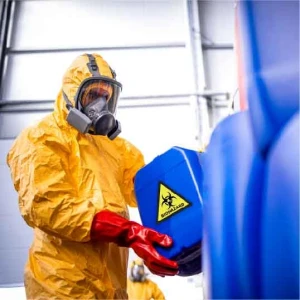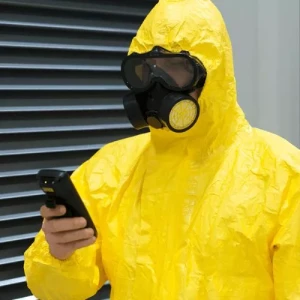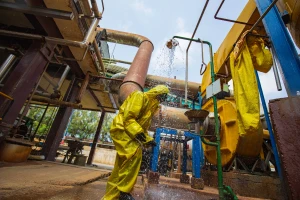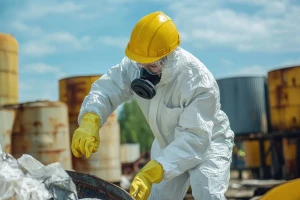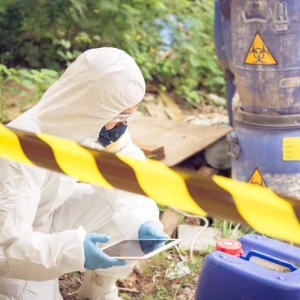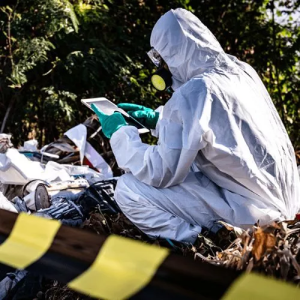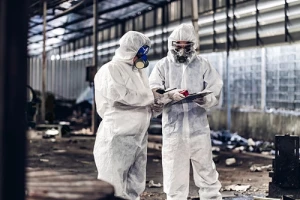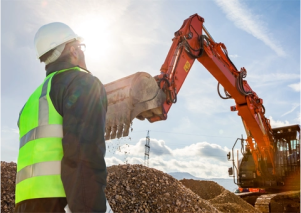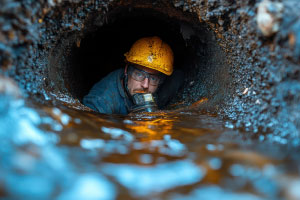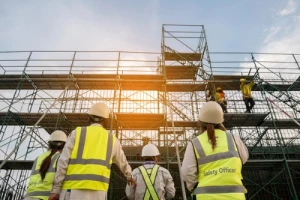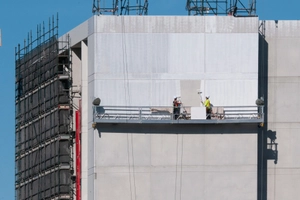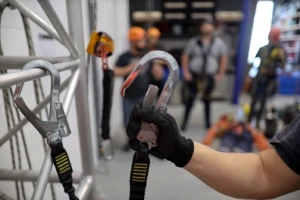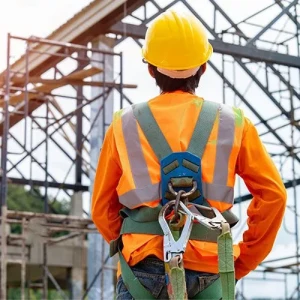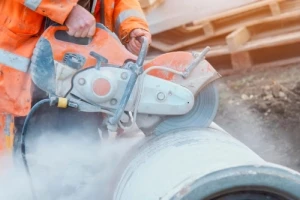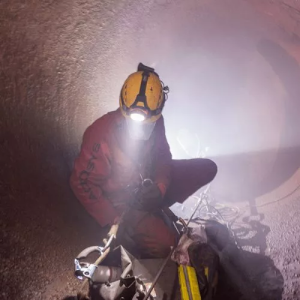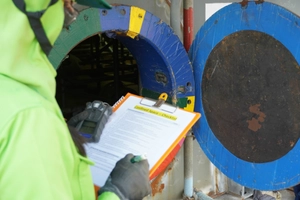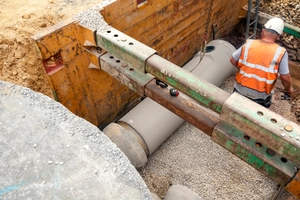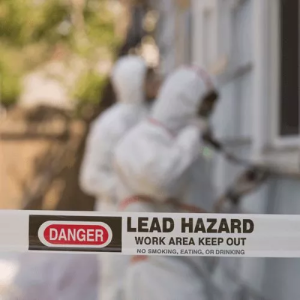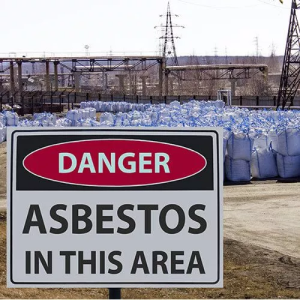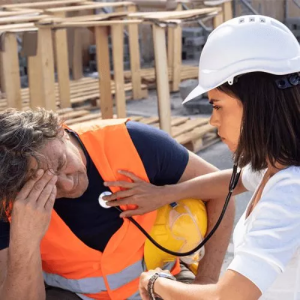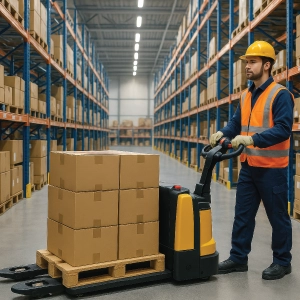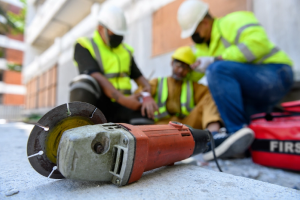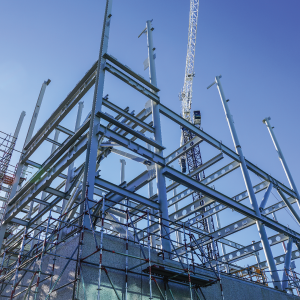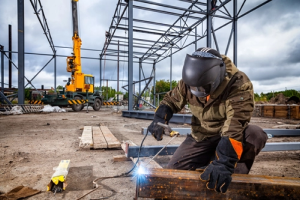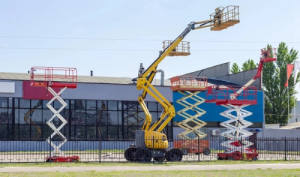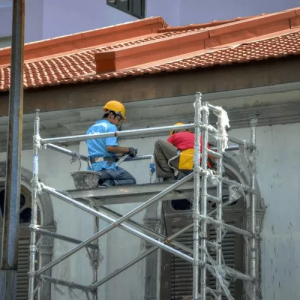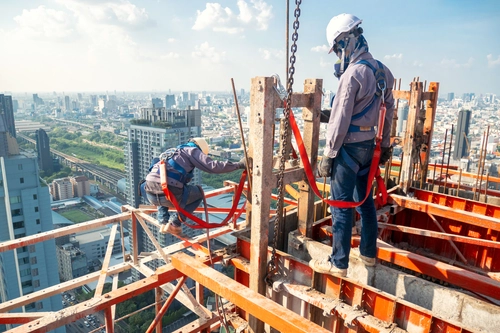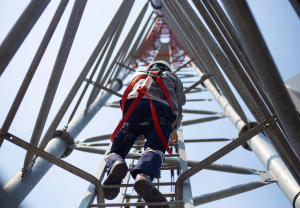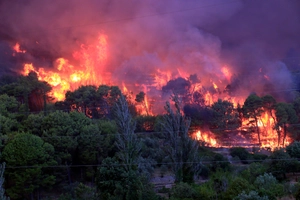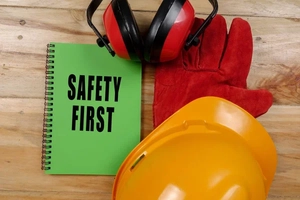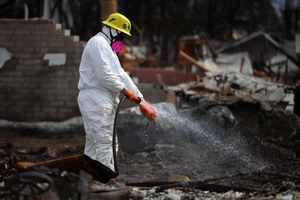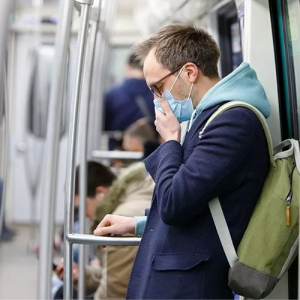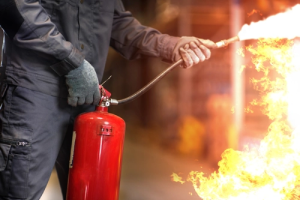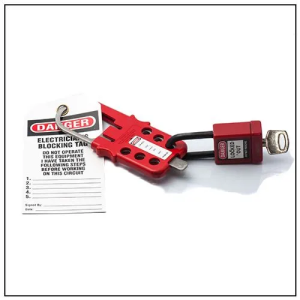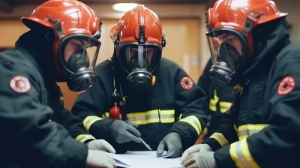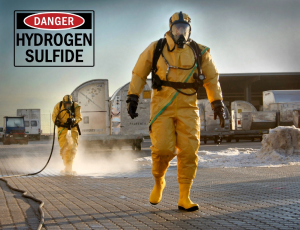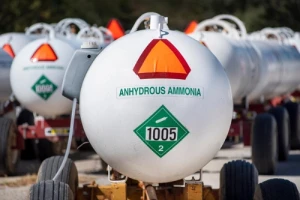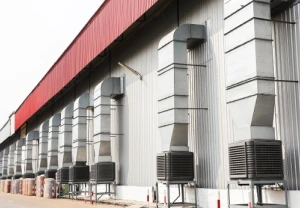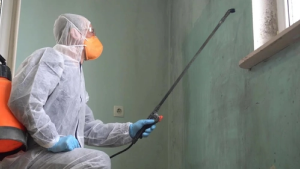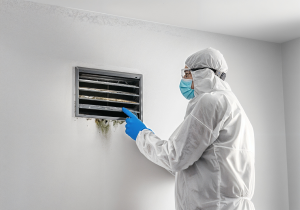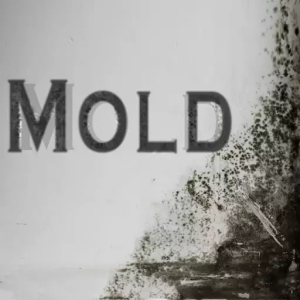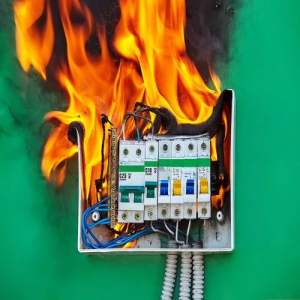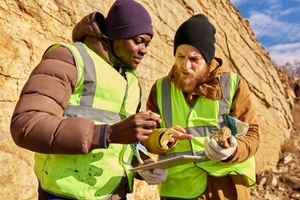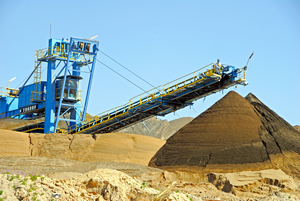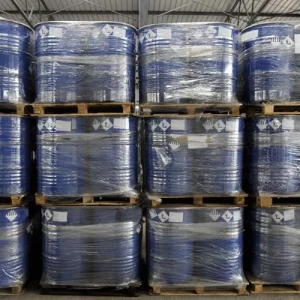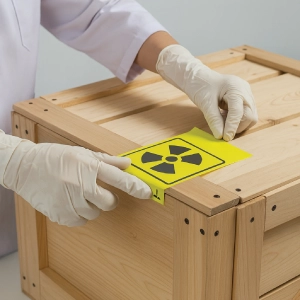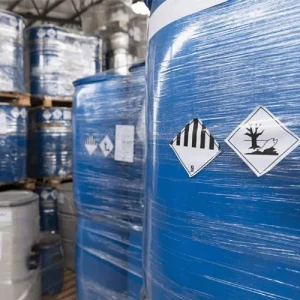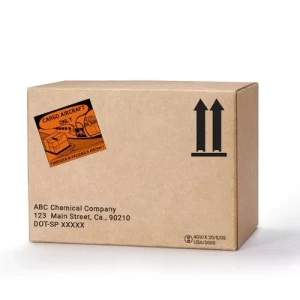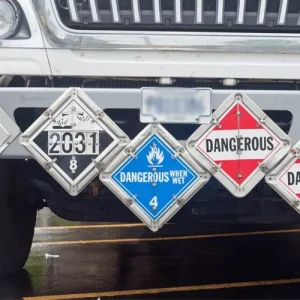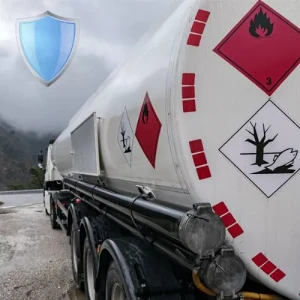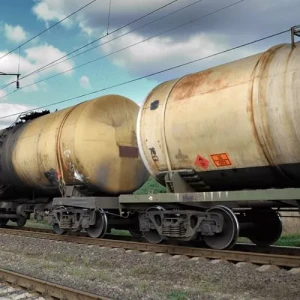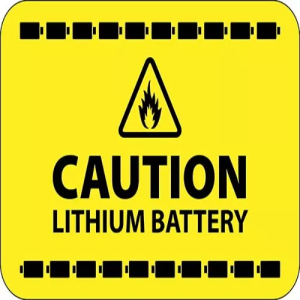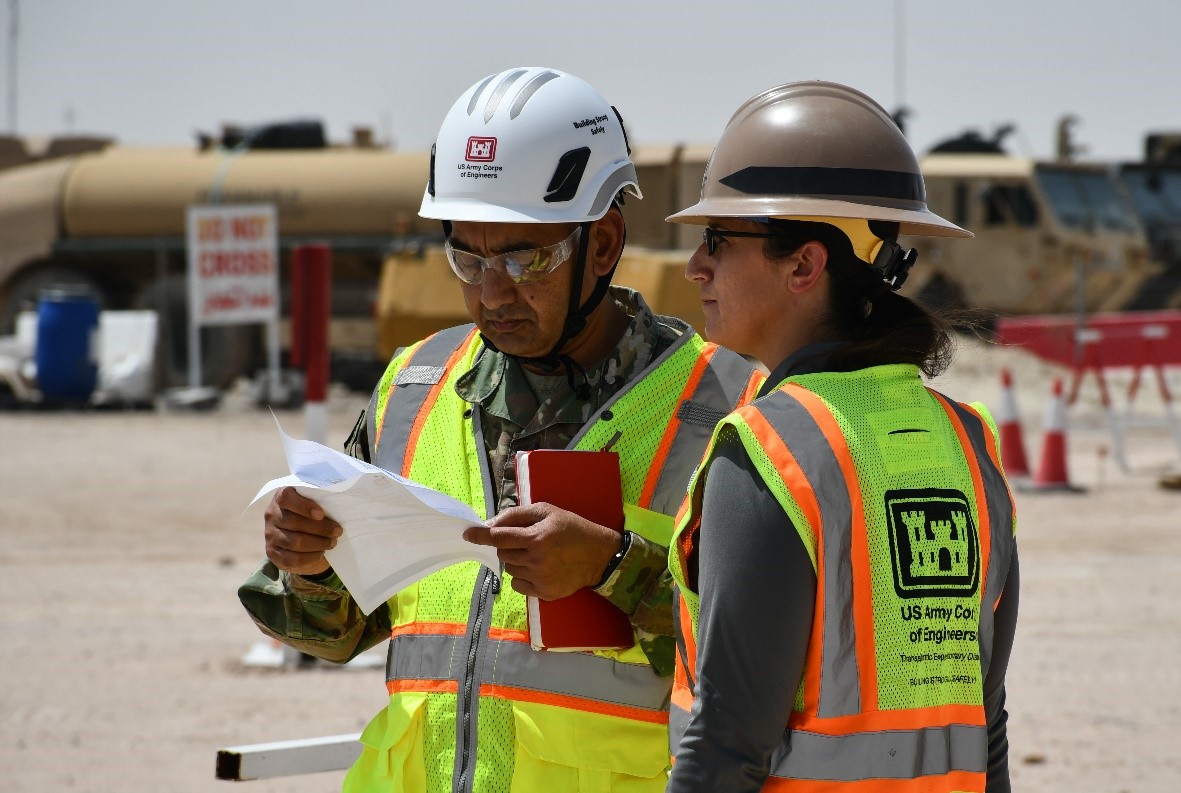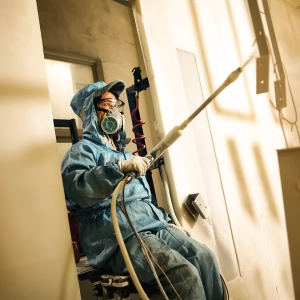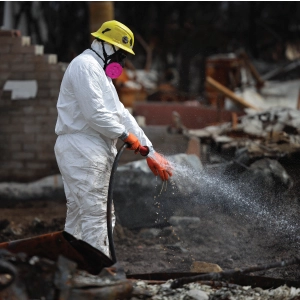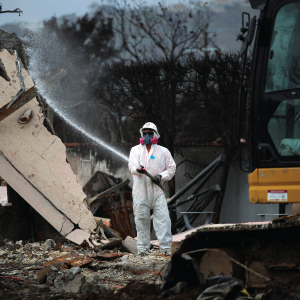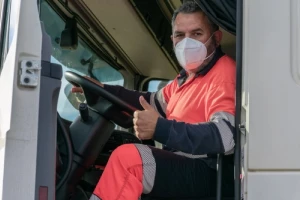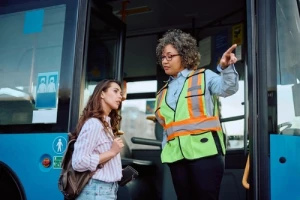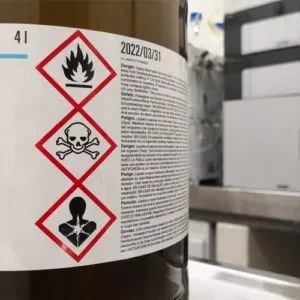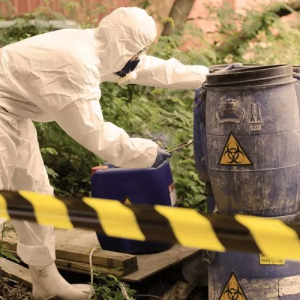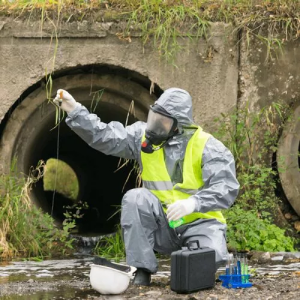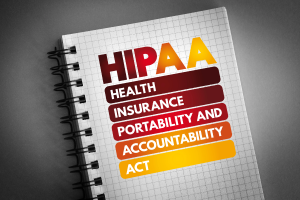Course Categories
- HAZWOPER Training (29 CFR 1910.120)
- OSHA 10 & 30 Hour Outreach Training
- OSHA Construction Safety Training
- OSHA General Industry Safety Training
- Competent Person Training
- Confined Space Training
- NFPA 70E Electrical & Arc Flash Safety
- EM385-1-1 Training
- MSHA Part 46 Training
- Hydrogen Sulfide (H2S) Training
- Ammonia Refrigeration Training
- Mold Inspection & Remediation Certification
- Stormwater Planning for Construction
- CDL Entry-Level Driver Training (ELDT)
- Hazard Communication (HazCom) & GHS
- Ergonomics & Injury Prevention Training
- Healthcare & HIPAA Compliance Training
HAZWOPER Training (29 CFR 1910.120)
$249.99
/Seat
40 Hour(s)
View Details
Enroll Now
$219.99
/Seat
40 Hour(s)
View Details
Enroll Now
$169.99
/Seat
24 Hour(s)
View Details
Enroll Now
$49.99
/Seat
8 Hour(s)
View Details
Enroll Now
$59.99
/Seat
8 Hour(s)
View Details
Enroll Now
$59.99
/Seat
8 Hour(s)
View Details
Enroll Now
$69.99
/Seat
8 Hour(s)
View Details
Enroll Now
$349.99
/Seat
40 Hour(s)
View Details
Enroll Now
$229.99
/Seat
24 Hour(s)
View Details
Enroll Now
$79.99
/Seat
8 Hour(s)
View Details
Enroll Now
$199.99
/Seat
8 Hour(s)
View Details
Enroll Now
OSHA 10 & 30 Hour Outreach Training
$59.99
/Seat
10 Hour(s)
View Details
Enroll Now
$169.99
/Seat
30 Hour(s)
View Details
Enroll Now
$59.99
/Seat
10 Hour(s)
View Details
Enroll Now
$60.99
/Seat
10 Hour(s)
View Details
Enroll Now
OSHA Construction Safety Training
$159.99
/Seat
8 Hour(s)
View Details
Enroll Now
$59.99
/Seat
3 Hour(s)
View Details
Enroll Now
$49.99
/Seat
3 Hour(s)
View Details
Enroll Now
$159.99
/Seat
6 Hour(s)
View Details
Enroll Now
$59.99
/Seat
3 Hour(s)
View Details
Enroll Now
$69.99
/Seat
5 Hour(s)
View Details
Enroll Now
$39.99
/Seat
3 Hour(s)
View Details
Enroll Now
$39.99
/Seat
3 Hour(s)
View Details
Enroll Now
$39.99
/Seat
3 Hour(s)
View Details
Enroll Now
$159.99
/Seat
8 Hour(s)
View Details
Enroll Now
$29.99
/Seat
2 Hour(s)
View Details
Enroll Now
$159.99
/Seat
6 Hour(s)
View Details
Enroll Now
$39.99
/Seat
2 Hour(s)
View Details
Enroll Now
$59.99
/Seat
4 Hour(s)
View Details
Enroll Now
$39.99
/Seat
2 Hour(s)
View Details
Enroll Now
$39.99
/Seat
2 Hour(s)
View Details
Enroll Now
$59.99
/Seat
2 Hour(s)
View Details
Enroll Now
$29.99
/Seat
1 Hour(s)
View Details
Enroll Now
$49.99
/Seat
2 Hour(s)
View Details
Enroll Now
$29.99
/Seat
2 Hour(s)
View Details
Enroll Now
$159.99
/Seat
5 Hour(s)
View Details
Enroll Now
$159.99
/Seat
6 Hour(s)
View Details
Enroll Now
$159.99
/Seat
3 Hour(s)
View Details
Enroll Now
$159.99
/Seat
8 Hour(s)
View Details
Enroll Now
$59.99
/Seat
3 Hour(s)
View Details
Enroll Now
$29.99
/Seat
2 Hour(s)
View Details
Enroll Now
$379.99
/Seat
7 Hour(s)
View Details
Enroll Now
$39.99
/Seat
2 Hour(s)
View Details
Enroll Now
$49.99
/Seat
2 Hour(s)
View Details
Enroll Now
$47.99
/Seat
1 Hour(s)
View Details
Enroll Now
$47.99
/Seat
1 Hour(s)
View Details
Enroll Now
$47.99
/Seat
1 Hour(s)
View Details
Enroll Now
$47.99
/Seat
1 Hour(s)
View Details
Enroll Now
$47.99
/Seat
1 Hour(s)
View Details
Enroll Now
$47.99
/Seat
1 Hour(s)
View Details
Enroll Now
OSHA General Industry Safety Training
$39.99
/Seat
2 Hour(s)
View Details
Enroll Now
$29.99
/Seat
2 Hour(s)
View Details
Enroll Now
$24.99
/Seat
1 Hour(s)
View Details
Enroll Now
$39.99
/Seat
2 Hour(s)
View Details
Enroll Now
$39.99
/Seat
2 Hour(s)
View Details
Enroll Now
$39.99
/Seat
2 Hour(s)
View Details
Enroll Now
$59.99
/Seat
3 Hour(s)
View Details
Enroll Now
$49.99
/Seat
2 Hour(s)
View Details
Enroll Now
$29.99
/Seat
2 Hour(s)
View Details
Enroll Now
$59.99
/Seat
4 Hour(s)
View Details
Enroll Now
$39.99
/Seat
2 Hour(s)
View Details
Enroll Now
$39.99
/Seat
2 Hour(s)
View Details
Enroll Now
$39.99
/Seat
2 Hour(s)
View Details
Enroll Now
$39.99
/Seat
2 Hour(s)
View Details
Enroll Now
$29.99
/Seat
1 Hour(s)
View Details
Enroll Now
$39.99
/Seat
1 Hour(s)
View Details
Enroll Now
$39.99
/Seat
3 Hour(s)
View Details
Enroll Now
$39.99
/Seat
3 Hour(s)
View Details
Enroll Now
$39.99
/Seat
2 Hour(s)
View Details
Enroll Now
$29.99
/Seat
2 Hour(s)
View Details
Enroll Now
$29.99
/Seat
2 Hour(s)
View Details
Enroll Now
$69.99
/Seat
5 Hour(s)
View Details
Enroll Now
$47.99
/Seat
1 Hour(s)
View Details
Enroll Now
$79.99
/Seat
5 Hour(s)
View Details
Enroll Now
$47.99
/Seat
1 Hour(s)
View Details
Enroll Now
Competent Person Training
$159.99
/Seat
8 Hour(s)
View Details
Enroll Now
$159.99
/Seat
6 Hour(s)
View Details
Enroll Now
$159.99
/Seat
5 Hour(s)
View Details
Enroll Now
$159.99
/Seat
6 Hour(s)
View Details
Enroll Now
$159.99
/Seat
8 Hour(s)
View Details
Enroll Now
$59.99
/Seat
3 Hour(s)
View Details
Enroll Now
$159.99
/Seat
8 Hour(s)
View Details
Enroll Now
$159.99
/Seat
6 Hour(s)
View Details
Enroll Now
Confined Space Training
$49.99
/Seat
3 Hour(s)
View Details
Enroll Now
$159.99
/Seat
6 Hour(s)
View Details
Enroll Now
$59.99
/Seat
3 Hour(s)
View Details
Enroll Now
$69.99
/Seat
5 Hour(s)
View Details
Enroll Now
NFPA 70E Electrical & Arc Flash Safety
$49.99
/Seat
3 Hour(s)
View Details
Enroll Now
$24.99
/Seat
1 Hour(s)
View Details
Enroll Now
$39.99
/Seat
2 Hour(s)
View Details
Enroll Now
EM385-1-1 Training
$349.99
/Seat
40 Hour(s)
View Details
Enroll Now
$239.99
/Seat
24 Hour(s)
View Details
Enroll Now
$114.99
/Seat
16 Hour(s)
View Details
Enroll Now
$99.99
/Seat
8 Hour(s)
View Details
Enroll Now
$99.99
/Seat
8 Hour(s)
View Details
Enroll Now
MSHA Part 46 Training
$109.99
/Seat
4 Hour(s)
View Details
Enroll Now
$109.99
/Seat
4 Hour(s)
View Details
Enroll Now
$184.99
/Seat
8 Hour(s)
View Details
Enroll Now
Hydrogen Sulfide (H2S) Training
$39.99
/Seat
3 Hour(s)
View Details
Enroll Now
$29.99
/Seat
3 Hour(s)
View Details
Enroll Now
$199.99
/Seat
4 Hour(s)
View Details
Enroll Now
Ammonia Refrigeration Training
$89.99
/Seat
2 Hour(s)
View Details
Enroll Now
$79.99
/Seat
2 Hour(s)
View Details
Enroll Now
$79.99
/Seat
2 Hour(s)
View Details
Enroll Now
$59.99
/Seat
1 Hour(s)
View Details
Enroll Now
Mold Inspection & Remediation Certification
$329.99
/Seat
6 Hour(s)
View Details
Enroll Now
$229.99
/Seat
4 Hour(s)
View Details
Enroll Now
$49.99
/Seat
2 Hour(s)
View Details
Enroll Now
Stormwater Planning for Construction
$379.99
/Seat
7 Hour(s)
View Details
Enroll Now
CDL Entry-Level Driver Training (ELDT)
$159.99
/Seat
15 Hour(s)
View Details
Enroll Now
$79.99
/Seat
5 Hour(s)
View Details
Enroll Now
$159.99
/Seat
13 Hour(s)
View Details
Enroll Now
$79.99
/Seat
6 Hour(s)
View Details
Enroll Now
$129.99
/Seat
12 Hour(s)
View Details
Enroll Now
$79.99
/Seat
5 Hour(s)
View Details
Enroll Now
Hazard Communication (HazCom) & GHS
$24.99
/Seat
2 Hour(s)
View Details
Enroll Now
Ergonomics & Injury Prevention Training
$39.99
/Seat
2 Hour(s)
View Details
Enroll Now
$29.99
/Seat
1 Hour(s)
View Details
Enroll Now
Healthcare & HIPAA Compliance Training
$59.99
/Seat
2 Hour(s)
View Details
Enroll Now
$39.99
/Seat
2 Hour(s)
View Details
Enroll Now
$19.99
/Seat
2 Hour(s)
View Details
Enroll Now
$79.99
/Seat
5 Hour(s)
View Details
Enroll Now
HAZWOPER Training (29 CFR 1910.120)
$249.99
/Seat
40 Hour(s)
View Details
Enroll Now
$219.99
/Seat
40 Hour(s)
View Details
Enroll Now
$169.99
/Seat
24 Hour(s)
View Details
Enroll Now
$49.99
/Seat
8 Hour(s)
View Details
Enroll Now
$59.99
/Seat
8 Hour(s)
View Details
Enroll Now
$59.99
/Seat
8 Hour(s)
View Details
Enroll Now
$69.99
/Seat
8 Hour(s)
View Details
Enroll Now
$349.99
/Seat
40 Hour(s)
View Details
Enroll Now
$229.99
/Seat
24 Hour(s)
View Details
Enroll Now
$79.99
/Seat
8 Hour(s)
View Details
Enroll Now
$199.99
/Seat
8 Hour(s)
View Details
Enroll Now
OSHA 10 & 30 Hour Outreach Training
$59.99
/Seat
10 Hour(s)
View Details
Enroll Now
$169.99
/Seat
30 Hour(s)
View Details
Enroll Now
$59.99
/Seat
10 Hour(s)
View Details
Enroll Now
$60.99
/Seat
10 Hour(s)
View Details
Enroll Now
OSHA Construction Safety Training
$159.99
/Seat
8 Hour(s)
View Details
Enroll Now
$59.99
/Seat
3 Hour(s)
View Details
Enroll Now
$49.99
/Seat
3 Hour(s)
View Details
Enroll Now
$159.99
/Seat
6 Hour(s)
View Details
Enroll Now
$59.99
/Seat
3 Hour(s)
View Details
Enroll Now
$69.99
/Seat
5 Hour(s)
View Details
Enroll Now
$39.99
/Seat
3 Hour(s)
View Details
Enroll Now
$39.99
/Seat
3 Hour(s)
View Details
Enroll Now
$39.99
/Seat
3 Hour(s)
View Details
Enroll Now
$159.99
/Seat
8 Hour(s)
View Details
Enroll Now
$29.99
/Seat
2 Hour(s)
View Details
Enroll Now
$159.99
/Seat
6 Hour(s)
View Details
Enroll Now
$39.99
/Seat
2 Hour(s)
View Details
Enroll Now
$59.99
/Seat
4 Hour(s)
View Details
Enroll Now
$39.99
/Seat
2 Hour(s)
View Details
Enroll Now
$39.99
/Seat
2 Hour(s)
View Details
Enroll Now
$59.99
/Seat
2 Hour(s)
View Details
Enroll Now
$29.99
/Seat
1 Hour(s)
View Details
Enroll Now
$49.99
/Seat
2 Hour(s)
View Details
Enroll Now
$29.99
/Seat
2 Hour(s)
View Details
Enroll Now
$159.99
/Seat
5 Hour(s)
View Details
Enroll Now
$159.99
/Seat
6 Hour(s)
View Details
Enroll Now
$159.99
/Seat
3 Hour(s)
View Details
Enroll Now
$159.99
/Seat
8 Hour(s)
View Details
Enroll Now
$59.99
/Seat
3 Hour(s)
View Details
Enroll Now
$29.99
/Seat
2 Hour(s)
View Details
Enroll Now
$379.99
/Seat
7 Hour(s)
View Details
Enroll Now
$39.99
/Seat
2 Hour(s)
View Details
Enroll Now
$49.99
/Seat
2 Hour(s)
View Details
Enroll Now
$47.99
/Seat
1 Hour(s)
View Details
Enroll Now
$47.99
/Seat
1 Hour(s)
View Details
Enroll Now
$47.99
/Seat
1 Hour(s)
View Details
Enroll Now
$47.99
/Seat
1 Hour(s)
View Details
Enroll Now
$47.99
/Seat
1 Hour(s)
View Details
Enroll Now
$47.99
/Seat
1 Hour(s)
View Details
Enroll Now
OSHA General Industry Safety Training
$39.99
/Seat
2 Hour(s)
View Details
Enroll Now
$29.99
/Seat
2 Hour(s)
View Details
Enroll Now
$24.99
/Seat
1 Hour(s)
View Details
Enroll Now
$39.99
/Seat
2 Hour(s)
View Details
Enroll Now
$39.99
/Seat
2 Hour(s)
View Details
Enroll Now
$39.99
/Seat
2 Hour(s)
View Details
Enroll Now
$59.99
/Seat
3 Hour(s)
View Details
Enroll Now
$49.99
/Seat
2 Hour(s)
View Details
Enroll Now
$29.99
/Seat
2 Hour(s)
View Details
Enroll Now
$59.99
/Seat
4 Hour(s)
View Details
Enroll Now
$39.99
/Seat
2 Hour(s)
View Details
Enroll Now
$39.99
/Seat
2 Hour(s)
View Details
Enroll Now
$39.99
/Seat
2 Hour(s)
View Details
Enroll Now
$39.99
/Seat
2 Hour(s)
View Details
Enroll Now
$29.99
/Seat
1 Hour(s)
View Details
Enroll Now
$39.99
/Seat
1 Hour(s)
View Details
Enroll Now
$39.99
/Seat
3 Hour(s)
View Details
Enroll Now
$39.99
/Seat
3 Hour(s)
View Details
Enroll Now
$39.99
/Seat
2 Hour(s)
View Details
Enroll Now
$29.99
/Seat
2 Hour(s)
View Details
Enroll Now
$29.99
/Seat
2 Hour(s)
View Details
Enroll Now
$69.99
/Seat
5 Hour(s)
View Details
Enroll Now
$47.99
/Seat
1 Hour(s)
View Details
Enroll Now
$79.99
/Seat
5 Hour(s)
View Details
Enroll Now
$47.99
/Seat
1 Hour(s)
View Details
Enroll Now
Competent Person Training
$159.99
/Seat
8 Hour(s)
View Details
Enroll Now
$159.99
/Seat
6 Hour(s)
View Details
Enroll Now
$159.99
/Seat
5 Hour(s)
View Details
Enroll Now
$159.99
/Seat
6 Hour(s)
View Details
Enroll Now
$159.99
/Seat
8 Hour(s)
View Details
Enroll Now
$59.99
/Seat
3 Hour(s)
View Details
Enroll Now
$159.99
/Seat
8 Hour(s)
View Details
Enroll Now
$159.99
/Seat
6 Hour(s)
View Details
Enroll Now
Confined Space Training
$49.99
/Seat
3 Hour(s)
View Details
Enroll Now
$159.99
/Seat
6 Hour(s)
View Details
Enroll Now
$59.99
/Seat
3 Hour(s)
View Details
Enroll Now
$69.99
/Seat
5 Hour(s)
View Details
Enroll Now
NFPA 70E Electrical & Arc Flash Safety
$49.99
/Seat
3 Hour(s)
View Details
Enroll Now
$24.99
/Seat
1 Hour(s)
View Details
Enroll Now
$39.99
/Seat
2 Hour(s)
View Details
Enroll Now
EM385-1-1 Training
$349.99
/Seat
40 Hour(s)
View Details
Enroll Now
$239.99
/Seat
24 Hour(s)
View Details
Enroll Now
$114.99
/Seat
16 Hour(s)
View Details
Enroll Now
$99.99
/Seat
8 Hour(s)
View Details
Enroll Now
$99.99
/Seat
8 Hour(s)
View Details
Enroll Now
MSHA Part 46 Training
$109.99
/Seat
4 Hour(s)
View Details
Enroll Now
$109.99
/Seat
4 Hour(s)
View Details
Enroll Now
$184.99
/Seat
8 Hour(s)
View Details
Enroll Now
Hydrogen Sulfide (H2S) Training
$39.99
/Seat
3 Hour(s)
View Details
Enroll Now
$29.99
/Seat
3 Hour(s)
View Details
Enroll Now
$199.99
/Seat
4 Hour(s)
View Details
Enroll Now
Ammonia Refrigeration Training
$89.99
/Seat
2 Hour(s)
View Details
Enroll Now
$79.99
/Seat
2 Hour(s)
View Details
Enroll Now
$79.99
/Seat
2 Hour(s)
View Details
Enroll Now
$59.99
/Seat
1 Hour(s)
View Details
Enroll Now
Mold Inspection & Remediation Certification
$329.99
/Seat
6 Hour(s)
View Details
Enroll Now
$229.99
/Seat
4 Hour(s)
View Details
Enroll Now
$49.99
/Seat
2 Hour(s)
View Details
Enroll Now
Stormwater Planning for Construction
$379.99
/Seat
7 Hour(s)
View Details
Enroll Now
CDL Entry-Level Driver Training (ELDT)
$159.99
/Seat
15 Hour(s)
View Details
Enroll Now
$79.99
/Seat
5 Hour(s)
View Details
Enroll Now
$159.99
/Seat
13 Hour(s)
View Details
Enroll Now
$79.99
/Seat
6 Hour(s)
View Details
Enroll Now
$129.99
/Seat
12 Hour(s)
View Details
Enroll Now
$79.99
/Seat
5 Hour(s)
View Details
Enroll Now
Hazard Communication (HazCom) & GHS
$24.99
/Seat
2 Hour(s)
View Details
Enroll Now
Ergonomics & Injury Prevention Training
$39.99
/Seat
2 Hour(s)
View Details
Enroll Now
$29.99
/Seat
1 Hour(s)
View Details
Enroll Now
Healthcare & HIPAA Compliance Training
$59.99
/Seat
2 Hour(s)
View Details
Enroll Now
$39.99
/Seat
2 Hour(s)
View Details
Enroll Now
$19.99
/Seat
2 Hour(s)
View Details
Enroll Now
$79.99
/Seat
5 Hour(s)
View Details
Enroll Now

 EN |
EN |  ES
ES